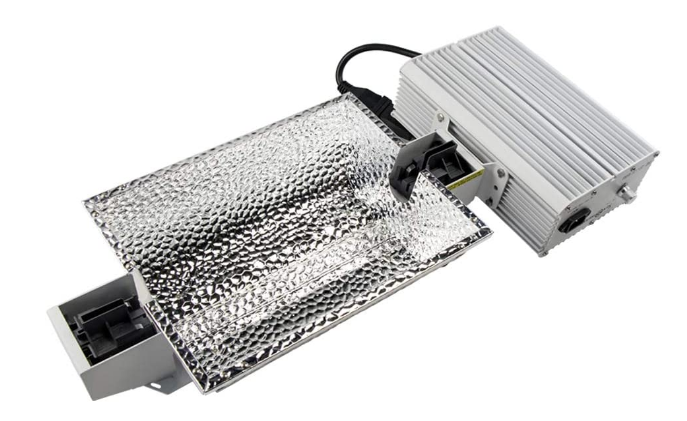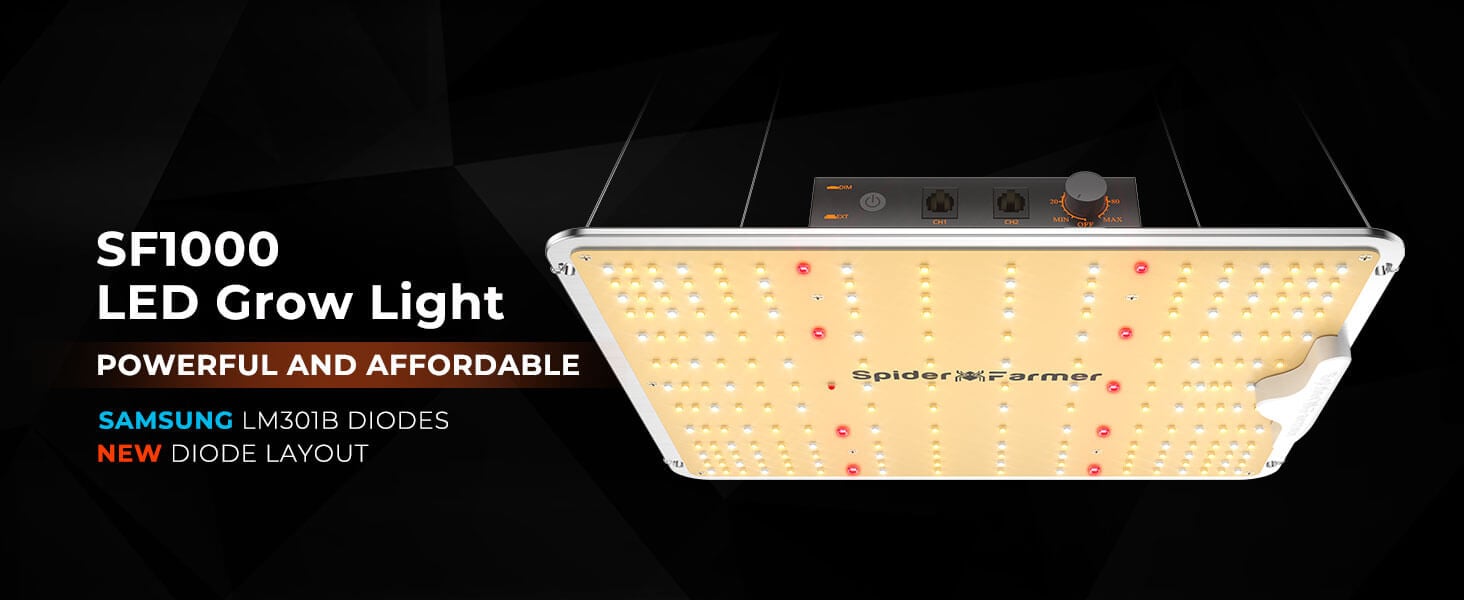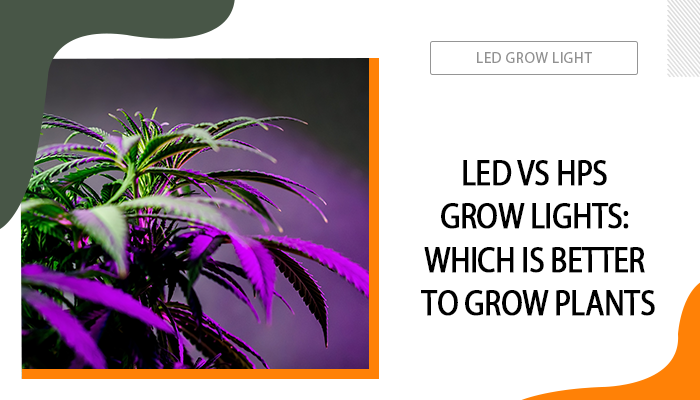In recent years, LED grow lights have taken a place in the plant lighting world, At first, the LEDs seemed unable to accurately locate and execute the necessary part of the growth light spectrum. Not only did they seem to be underperforming, but they also paid a higher upfront cost. Meanwhile, as long been the industry standard, the HPS grow light system seems more reliable and has been tested in the agricultural industry for many years.
However, with the passage of time and the further improvement of technology, LED grow lights have caught up with and surpassed the performance of HPS grow lights in multiple aspects. In the following content, let’s have a comprehensive comparison between HPS and LED grow lights.
Table of Contents
HPS Grow Lights: Pros & Cons
HPS, or High-Pressure Sodium, grow lights are a type of high-intensity discharge (HID) lighting commonly used for indoor plant cultivation. These lights have been a popular choice among growers for many years, particularly for flowering and fruiting plants. Why? Check the following features that contribute to its popularity.

SunStream 1000 Watt DE Double-Ended HID Grow Light
Pros of HPS Grow Lights:
- Efficient for Flowering and Fruiting: HPS lights are especially effective during the flowering and fruiting stages of plant growth due to their strong output in the yellow and red growth light spectrum, which are highly beneficial for robust flowering and fruit production.
- Cost-Effective Initial Investment: HPS grow lights are relatively affordable compared to some other lighting options, making them a budget-friendly choice for many growers.
- High Intensity: HPS lights produce a high-intensity light, which can penetrate deep into the canopy, promoting even growth throughout the plant.
- Simple Setup: HPS grow lights are straightforward to set up and use, making them suitable for beginners and experienced growers alike.
Cons of HPS Grow Lights:
- Massive Heat Production: HPS lights generate a significant amount of heat during operation. This can lead to higher temperatures in the growing area, which may require additional cooling and ventilation systems. The excess heat can also be problematic in small or confined grow spaces.
- Limited Spectrum: While the spectrum produced by HPS lights is excellent for flowering and fruiting, it is not ideal for the entire plant growth cycle. Growers often need to supplement HPS lighting with other light sources, like T5 fluorescent lights or metal halide lamps, to offer a full spectrum.
- Energy Inefficiency: HPS lights are less energy-efficient compared to newer lighting technologies like LED. They consume more electricity for the amount of light produced, resulting in higher operating costs.
- Shorter Lifespan: HPS bulbs have a shorter lifespan compared to LEDs. They typically last around 10,000 to 20,000 hours and gradually lose intensity over time, requiring more frequent replacement.
LED Grow Lights: Pros & Cons
LED grow lights are a modern and highly efficient lighting option for indoor plant cultivation. These lights use semiconductor diodes, such as Samsung diodes, to produce light when an electric current passes through them.

Spider Farmer SF1000 LED grow light
Pros of LED Grow Lights:
- Energy Efficiency: LED grow lights are incredibly energy-efficient. They produce more light per watt of electricity consumed compared to traditional lighting options like HPS or fluorescent lights. This leads to significant energy savings over time.
- Customizable Spectrum: LED grow lights offer the flexibility to customize the light spectrum according to the specific needs of your plants. You can adjust the spectrum to match different growth stages, from seedlings to flowering, promoting healthier growth and potentially increasing yields.
- Low Heat Output: LED grow lights generate minimal heat during operation. Therefore, they are unlikely to catch fire. This also reduces the need for complex cooling and ventilation systems in your grow space and helps maintain a consistent temperature, especially in smaller environments.
- Long Lifespan: LED bulbs have a long operational lifespan, often exceeding 50,000 hours of use. This means fewer bulb replacements and reduced maintenance costs over time.
- More Yield: LED lights typically yield approximately 1 to 1.5 grams per watt, which is almost 2 times more than how much HPS grow lights typically yield.
- Versatility: LED grow lights are versatile and can be used for a wide range of plants, including vegetables, herbs, flowers, and cannabis. Their customizable spectrum makes them suitable for various growth phases.
- Light Uniformity: LEDs distribute light evenly across the canopy, ensuring consistent growth and yields throughout the entire plant.
Cons of LED Grow Lights:
- Initial Cost: LED grow lights typically have a higher upfront cost compared to some other lighting options like HPS. However, the long-term energy savings and reduced maintenance costs often make up for the initial investment. Check to see how much LED lights cost.
- Less Powerful Light Penetration: While LEDs provide even light distribution, they may not penetrate as deeply and strongly into the plants as HPS lights. This can be mitigated by adjusting light height and using multiple fixtures.
LED vs HPS Grow Lights
|
LED Grow Lights |
HPS Grow Lights |
|
|---|---|---|
|
Light Spectrum |
Full spectrum |
Mainly red spectrum |
|
Cost |
High upfront cost |
Low |
|
Yield |
1 to 1.5 grams/watt |
0.5 grams/watt |
|
Heat Output |
Low |
High |
|
Lifespan |
Long |
Short |
|
Energy Efficiency |
High |
Low |
Conclusion
When comparing HPS vs LED grow lights, which is better? From a general rule of thumb, we highly recommend LED grow lights, thanks to the many advantages they share. However, for budget-tight growers, HPS lights can stand as a good option as well.



I feel like the only people still using HPS are the people who can’t afford the upfront cost of switching the light for their setup. Take me for instance, I would kill for a good spider farmer light, I come on your website and just scroll thinking how much medicine quality could significantly increase if I had a decent light. But I already. Can’t afford my bills so I’m stuck lol one day….. one day….. haha
😉
i found it